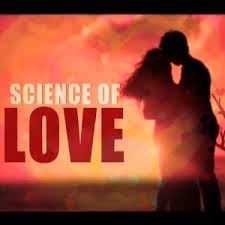The Science of Love.
Most of us have definitely felt that rush… that tingling sensation when we look into another person’s eyes and see some deep emotion mirrored there.
But love is so much more than a feeling only. Scientists claim that love is very much like a drug. It is something that we absorb, gets distributed throughout the body and then exerts its action throughout the whole body. There is a lot of science and art behind this thing we call love. In medicine, a lot of hormones have been associated with love and a lot have been released with their functions such as:
Oxytocin and vasopressin- Research shows that these two hormones interact to allow the dynamic behavioural states and behaviors necessary for love. It is said that oxytocin is one of the fundamental hormones for lasting love.
Phenylethylamine-anxiety and stomach burn at that first date.
Endorphins-It’ s that hormone responsible for pleasure when you’re with your partner.
Testoterone-It is responsible for the rush of sexual desire in men which usually activates the senses in a particular order – vision, sound, smell and taste. Other symptoms include: increased pulse, dilating of pupils and salivation.
It is widely advised that if your relationship is undergoing some problems that you should learn to watch for changes in your biochemistry. All these chemicals running around in your brain are often triggered without your conscious thought, and you are left with making sense of them and how they affect your decision making.
Apart from the hormones in our brain, every part of our body also responds in its own way when we are in love. Right from the top downwards:
Our eyes: We have a special look that we give the one we love. It could be seductive or a knowing look that shows that you have an important secret that you both share or it might be the way your eyes light up when you catch a glimpse of the person you love. Sometimes, your eyes can do what your mouth does-smile!
Our nose: We lean in deep to smell their cologne or perfume.
Our mouth: We definitely smile first, then kiss them or brush our lips against theirs or their cheek or their forehead.
Our neck: We move our head and neck as close to them as possible
Our arms: We hold them tight in an embrace
Our hands: We touch every part of them that we have been permitted to touch, trace their fingertips, clasp their hands in ours, and brush a straying hair away.
Our heart: It beats faster when we see them more so after a physical expression of love, like a touch an embrace or a kiss.
Our belly: That’s where the phrase butterfly feeling comes from.
Our feet: Run towards them when we see them coming in the distance. Also our feet can get a special treat from the ones we love and we don’t even have to pay for it-a feet massage.
Whatever we do to express our love and however we respond to the person we love, we must not forget this salient fact: a life without love is not a life fully lived. Although research into mechanisms through which love protects us against stress and disease is in its infancy, this knowledge will ultimately increase our understanding of the way that our emotions have an impact on health and disease. We have much to learn about love and much to learn from love itself and we should endeavor to never stop learning.



This is well scripted and I also like the scientific explanatory of the terminologies above, weldone Dr Vickie and happy valentine